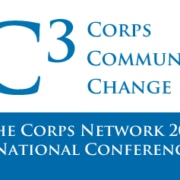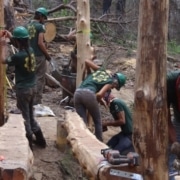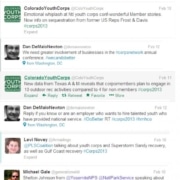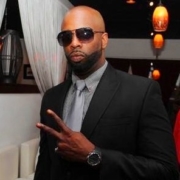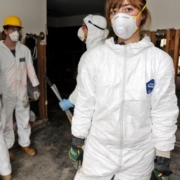Coverage of our 2013 National Conference

Editor’s Note: we will continue to add to this page as more materials from the Conference become available
Synopses
- An Inspiring Opening Session also Generates “Emotional Whiplash”
- The Corps Network Honors the Winners of the 2013 Corps Legacy Achievement Award
- Plenary: Youth Unemployment – Success Stories from Tackling a National Problem
- Plenary: A New Legacy – The 21st Century Conservation Service Corps
- Plenary: 20 Years of National Service Success
- Plenary: Why The Corps Network Matters, Annual Meeting
- 2013 Friends of National Service Reception
- 2013 Capitol Hill Award Ceremony
Materials
- 2013 National Conference Workshop Materials
- Video: Meet the 2013 Corpsmembers of the Year
- Video: Chapter 113 – by Meridian Hill Pictures (shown during the 2/11/’13 plenary “A New Legacy: The 21st Century Conservation Service Corps”)
Press Releases
- The Corps Network Honors U.S. Senator Mark Begich for this Support of the PLSC Act
- The Corps Network Honors U.S. Senator Barbara Boxer for her support of Youth Service and Conservation Corps in the MAP-21 Act
- The Corps Network Honors U.S. Senator Christopher Coons for his Support of the PLSC Act
- The Corps Network Honors U.S. Representative Raul Grijalva for Introducing the PLSC Act
- The Corps Network Honors U.S. Representative Ruben Hinojosa for his support of Corps and Youth in the WIA
- The Corps Network Honors U.S. Representative Nick Rahall for his support of Youth Service and Conservation Corps in the MAP-21 Act
- The Corps Network Recognizes Secretary Ken Salazar as a Champion of Youth Service and Conservation Corps
- The Corps Network honors U.S. Representative John Tierney for his Support of Corps and Youth in the WIA
- The Corps Network Recognizes Secretary Tom Vilsack as a Champion of Youth Service and Conservation Corps
Other
Workshop Materials – 2013 National Conference

See below for some of the PowerPoint presentations, handouts, and videos used during our 2013 National Conference.
MONDAY, February 11, 2013
Plenary
Youth Unemployment – Success Stories from Tackling a National Problem
- PowerPoint Presentation from The Annie E. Casey Foundation
- PowerPoint Presentation from U.S. Department of Labor
Concurrent Workshops I
Transportation Funds and Youth Corps
- PowerPoint from U.S. Department of Transportation: Overview of the Transportation Alternatives Program and MAP-21 Youth Corps Provisions
- PowerPoint: Conservation Corps and Transportation Enhancements/Alternatives, the CA Experience
- Handout: MAP-21 Q&A
Films and Research that Explore the Corpsmembers Experience
- Video: link to video and photos from Green Corps, a Meridian Hill Pictures documentary
- Video: link to the trailer for the film Dollar a Day Boys, by Dr. Anthony DiFranco
- Handout: Newsday Article featuring Dr. Anthony DiFranco’s film, Dollar a Day Boys
- Handout: Dr. Anthony DiFranco’s talking points
Concurrent Workshops II
Fun & Fundraisers: The Good, the Rad, the Ugly
- PowerPoint: Slides from EarthCorps, Mile High Youth Corps, KUPU, Vermont Youth CC, The Sustainability Inst., American YouthWorks
- Handout: Fundraising Tips
The Value of Data in Creating Performance Management Systems to Improve Youth Outcomes
- PowerPoint: Juma Ventures
- PowerPoint: NYEC (National Youth Employment Coalition)
- PowerPoint: OPP (Our Piece of the Pie)
TUESDAY, February 12, 2013
Concurrent Workshops III
Maximizing Earned Income: Social Enterprise & Effective Data Systems
Concurrent Workshops V
How to get your Corps Involved in Disaster Relief
Patrick Barnes of Limitless Vistas Pens Op-Ed about Gulf Coast Restoration and Job Training for Youth
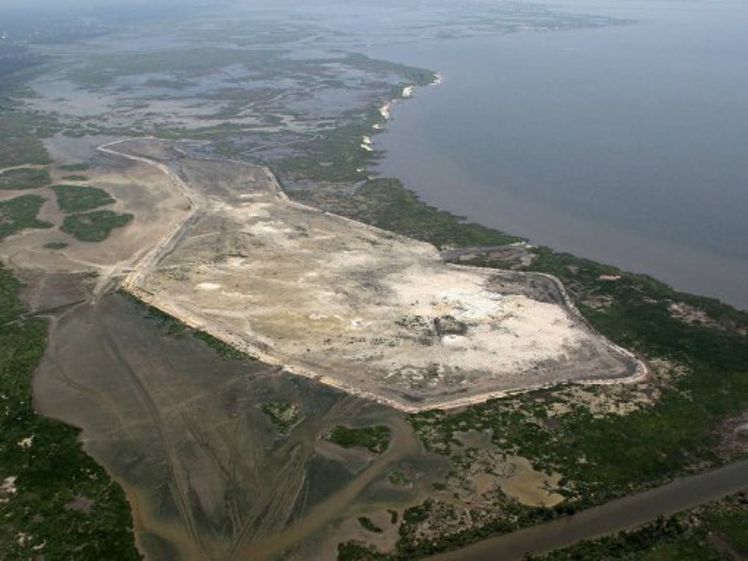
Republished From from The Times-Picayune
With Restore money, Louisiana should strengthen coast and provide job training: Patrick A. Barnes
From oiled marshes and decreased oyster harvests to rising poverty rates and loss of livelihoods, Louisiana has suffered in many ways from the 2010 Deepwater Horizon oil spill. Soon, we will have a chance to repair and restore both our environment and our economy, as the Restore Act sends billions of dollars in Clean Water Act fines to the Gulf Coast states.
In a number of places across the coast, the debate of how to invest this money has pitted the economy against the environment. But instead of debating false choices, why not aim to pursue both? It’s actually a simple proposition: We can create new job and business opportunities by focusing on restoring our coastal and marine ecosystems.
I’m proud to join a diverse group of business leaders from across the Gulf Coast — from the Florida Panhandle to the coast of Texas — who agree that we need to strengthen our region’s traditional industries and create new opportunities by focusing on repairing our coastal environment. More than 120 companies, operating in more than 800 locations and generating more than $20 billion in annual revenues, delivered a letter to the five Gulf Coast governors to say that a healthy ecosystem is a key to driving private sector job growth and future prosperity and fostering economic mobility.
Louisiana, under the leadership of the Coastal Protection and Restoration Authority (CPRA), deserves significant credit for connecting the dots between a healthy coastline and a stronger economic and cultural future. The Louisiana Coastal Master Plan, the result of much hard work and the support of the Legislature, will invest the funds from the spill to advance this work. That represents a model for other states along the coast.
Restoring our coastal treasures can help tackle many economic goals, including drawing more visitors, promoting thriving fisheries and making our communities more resilient in the face of future storms and sea level rise. Projects like barrier island restoration, marsh creation or oyster reef construction create a demand for a wide variety of private sector companies in the engineering, construction, transportation and manufacturing sectors.
As the president of a regional engineering firm with offices in New Orleans, I’ve seen first-hand what Louisiana’s commitment to coastal restoration means for this growing industry and for workers. One in 12 construction jobs in Louisiana is tied to coastal restoration, according to the Louisiana Workforce Commission. Studies have found ecosystem restoration projects create between 17 and 36 jobs for every million dollars invested. These jobs run the gamut from coastal engineers and geologists to boat captains, welders and equipment operators.
In the state’s master plan, our state’s leadership has acknowledged the opportunity in these restoration jobs and expressed support for helping local workers gain the skills necessary to do them. This is the kind of integrated thinking we need. Many communities face significant economic obstacles; the region has suffered a sharp jump in poverty since the 2010 oil spill, and the decimation of the seafood industry has meant a serious loss of livelihoods. As a founder of the nonprofit Limitless Vistas Inc., I’ve worked for 20 years with disadvantaged and low income youth, giving them the skills necessary to get access to new, good-paying jobs in the environmental field. Many of these jobs do not require a four-year degree and are well suited for short-term applied and on-the-job training opportunities.
Similarly, business leaders across Louisiana and the region who supported this letter believe that our restoration plans could benefit from including efforts to prepare local, low income and disadvantaged workers for these new restoration jobs.
We have a chance to bring industry, communities and training institutions together to identify the necessary skill sets and training programs to prepare our state’s workforce to conduct future restoration projects. Investing even a modest portion of Restore Act funds in this way can help address both the economic and environmental challenges and opportunities we face as a state and a region.
Patrick A. Barnes is a professional geologist, president of BFA Environmental and founder of Limitless Vistas Inc., a New Orleans-based nonprofit preparing at-risk youth for environmental jobs.
Public Lands Service Corps Act Introduced in U.S. Senate
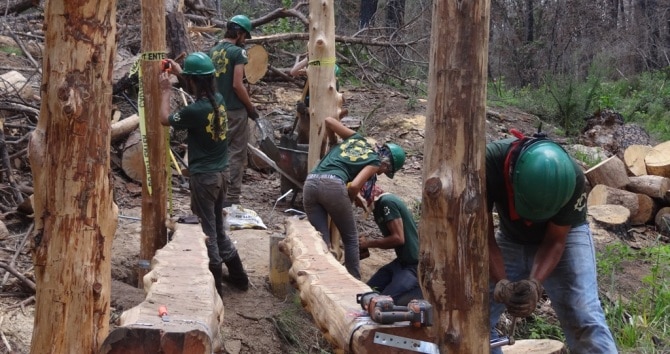
From the Office of U.S. Senator Martin Heinrich
Senators Launch Effort to Employ Youth Restoring Public Lands
Friday, February 15, 2013
WASHINGTON – U.S. Senators Tom Udall and Martin Heinrich today reintroduced legislation to expand job training and educational opportunities for youth, while helping repair and restore the country’s public lands.
The Public Lands Service Corps Act of 2013 improves on the existing Public Lands Corps by expanding the scope of projects to reflect new challenges. It would also add incentives to attract new participants, including Native Americans and veterans, that suffer from disproportionately high rates of unemployment.
“As many of our public land managers retire, we have the opportunity to create a new generation of conservation leaders to protect the lands and natural environment that make New Mexico so spectacular,” said Udall. “Passing this legislation would also help combat the unacceptably high unemployment young people face by providing them with job training, education and skills they can utilize long into their careers.”
“Strengthening the Public Lands Corps program will continue to provide rewarding opportunities for young adults who want to work to preserve our water and public lands, such as our rivers and lakes, national parks and forests, and tribal lands. This bill is also particularly significant for tribal families in New Mexico because it establishes the Indian Youth Service Corps where young adults can work to preserve their tribal lands and strengthen their communities. As a former AmeriCorps volunteer myself, I spent the better part of a year doing construction, education, and fieldwork for the U.S. Fish and Wildlife Service, and I know first-hand that these programs are essential to improve the lives of those around us,” said Heinrich.
Currently, several agencies such as the U.S. Forest Service and the National Park Service work with national nonprofit organizations and more than 100 service corps to hire and train young people to build trails, perform maintenance, and assist with conservation projects.
An array of local, regional and national organizations support expanding the Public Lands Corps Act, including the National Parks Conservation Association, the Sierra Club, the National Education Association and the Public Lands Service Coalition, which includes the Rocky Mountain Youth Corps in New Mexico.
“Senators Udall and Heinrich understand the positive impacts that come from linking community service with environmental stewardship,” said Carl Colonius, Executive Director of the Rocky Mountain Youth Corps in Taos, New Mexico. “I thank them for introducing the Public Lands Service Corps Act and inspiring young people in New Mexico and across the country to revitalize communities, preserve and restore the environment, prepare for responsible, productive lives and build civic spirit through service.”
Specifically the senators’ bill would do the following:
- Amend the Public Lands Corps Act of 1993 to raise the priority of service corps in the Interior and Agriculture Departments (including such agencies as the National Park Service, the Bureau of Land Management, the U.S. Fish and Wildlife Service, and the U.S. Forest Service);
- Establish an Indian Youth Service Corps so that Indian Tribes can start corps programs to carry out priority projects on Tribal lands, which Udall has worked to include in legislation since 2009;
- Authorize the National Oceanic and Atmospheric Administration in the Department of Commerce to participate in the program, which would allow Corps members to work on restoring coastal and marine ecosystems;
- Provides for establishing residential conservation centers to house and train corps participants;
- Expand the scope of eligible projects to include working with agency professionals on activities including historical, scientific and cultural research, visitor services, and interpretation;
- Allow agencies to provide noncompetitive hiring status for Corps participants for two years after completing service. Current law allows such status for only 120 days; and
- Expand the age range for the program is to youth aged 15 to 25, and participants may serve either in crews or as individuals.
The legislation was also introduced by Sen. Udall and retired Sen. Jeff Bingaman during the 112th Congress and it cleared the Senate Energy and Natural Resources Committee.
The new Senate legislation is cosponsored by Sens. Mark Begich (D-Alaska), Barbara Boxer (D-Calif.) and Chris Coons (D-Del.).
Tweets about The Corps Network 2013 National Conference
Last week, Twitter was aflutter with commentary about The Corps Network 2013 National Conference. We took screen shots of some of the best tweets and have aggregated them for your reading pleasure. Enjoy!


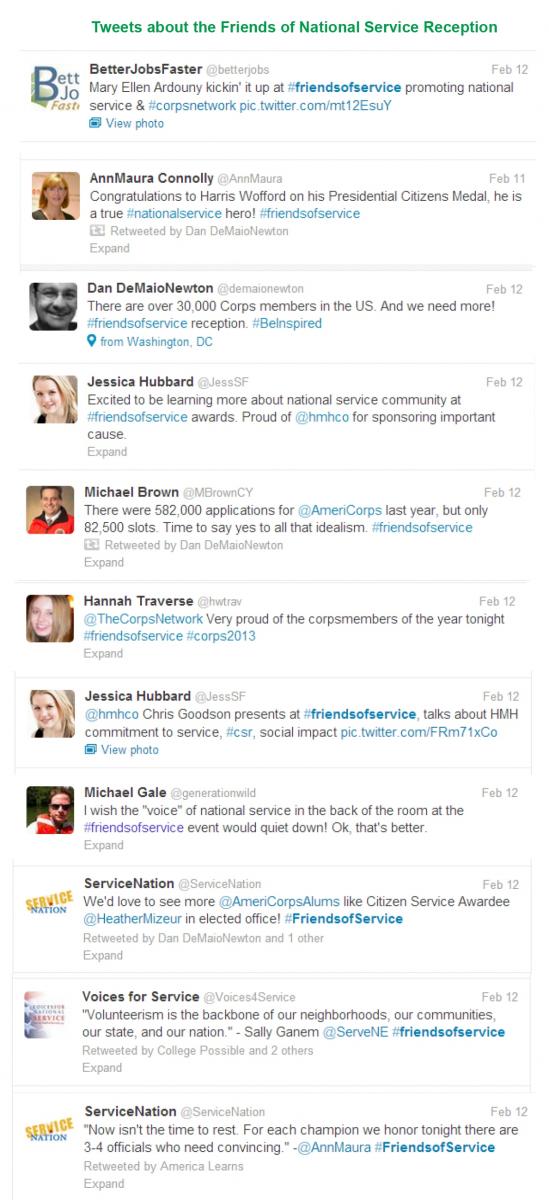

A Corpsmember who survived the Rwandan genocide wins state award in Colorado
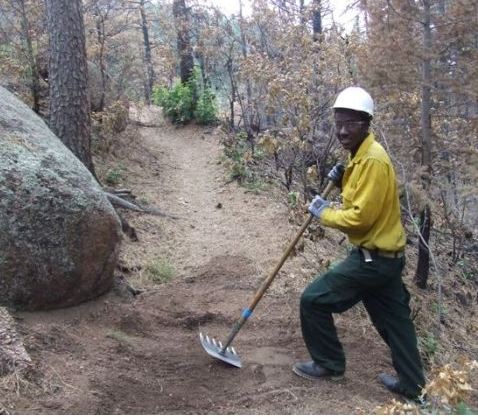
Christian Ndushabandi at work – Photo taken from The Gazette
Taken from The Gazette of Colorado Springs, CO – written by Carol McGraw
When 19-year-old Christian Ndushabandi receives a Mile High Youth Corps award and gives a speech at the state Capitol Monday before a crowd of legislators, federal officials and others, his mother won’t be there.
Instead, Elise Lukambo is in the hospital having an appendectomy.
“I feel sad that she won’t be there,” Ndushabandi says. But he shrugs it off. A former school teacher, she taught him that in the grand scheme of things such disappointments are not earthshaking. Not like the Rwanda genocide and other warfare that tore the family asunder and set them on a path that has led Ndushabandi to this honorary moment.
Last week, he sat in his family’s Colorado Springs apartment below a photo of his late father.
He’d been working on the talk he will give, and plans to spend a few minutes speaking about his love of conservation. But part of that is how he got here, a journey that began with his family’s terror during the 100 days in 1994 when up to one million were killed in a civil war in which tribal Hutus laid waste to the Tutsis.
“I used to be ashamed to tell about the bad things that occurred. But now I am relieved to talk about it.”
He wants to tell his family’s painful story, he says, because, “The genocide is something not to forget. If people know, maybe it won’t happen again.”
It was early evening in the small city of Gitarama when Tutsis were dragged from their homes and herded into the streets by Hutu killing groups, some of them neighbors, armed with knives and machetes.
Lukambo, who was pregnant, was attacked. A machete cut deep into her shoulder and the back of her head and neck. She fell and was thought dead.
Ndushabandi was only a year old at the time. In the mayhem, his Hutu babysitter pretended he was hers, strapped him to her back and fled the carnage. The toddler was returned to his family two days later.
But it wasn’t over. A week later, his father Cassien Ndushabandi, a superintendent of schools, was murdered in his office.
Lukambo later married her husband’s brother, as is custom. They were living in the Congo, and again the warfare hit. He was killed during the ethnic strife.
Alone with four children, Lukambo sought help from the United Nations High Commission for Refugees. They ended up in Colorado Springs and received resettlement help from Lutheran Family Services, Rocky Mountain Refugee and Asylee program. The agency helped with a variety of social services, including an apartment, food, medical services and enrollment in school. Lukambo received surgery for the debilitating injuries that plagued her.
Floyd Preston, Lutheran Services program director, says, “They are all troopers. She is a sweet lady who has been through tremendous trials with faith and persistence to survive.”
He adds, “Christian has been the rock of the family. His award is testament to their new beginnings.”
Ndushabandi graduated from Palmer High School last year. He learned English quickly, a feat he attributes to the two years of seasonal work with Mile High Youth Corps in Colorado Springs. “I had to learn. No one knew my language.”
Nancy O. WIlson, director of the regional Mile High Youth Corps, says Ndushabandi was one of 10 youth in the state chosen for the award because of his outstanding work ethic and leadership. “He’s a remarkable young man who got a job right away with us to support his family. And he realizes the importance of education.”
The corps trains youths 17 to 24 to do conservation work. Ndushabandi built trails in the Pike and San Isabel National Forests and worked on erosion control efforts in the Hayman fire and Waldo Canyon fire burn areas.
When he first did trail work, he could not imagine what it was for — in his former country, he explains, “We did not hike for fun, we hiked because we had to.”
Corps workers receive weekly living stipends and are provided with Americorp scholarships of $1,468.
Ndushabandi is the major breadwinner for his mother, two sisters, 18 and 15, and brother, 12. “I worry about it a lot,” he says.
He worked in a pizza restaurant and is working part time in the cafeteria at the Air Force Academy Preparatory School. His mother, who is taking classes to learn English, works two day a week in food services. Her disabilities prevent her from full-time employment. They plan to become U.S. citizens.
He writes almost daily, putting down his family’s memories as well as their experiences now. “I want to write my mother’s story in a book,” he says.
Ndushabandi is studying at Pikes Peak Community College and plans to attend medical school to become a surgeon. “I saw how they helped my mother. I’d like to give back and visit Africa, too and help where it is needed.”
—
Contact Carol McGraw: 636-0371 Twitter @mcgrawatgazette Facebook Carol McGraw
How AmeriCorps helped Ladine Daniels find personal success
Sadly, Ladine “JR” Daniels passed away in his sleep in early November 2014. JR was a loved and respected member of the Corps community. He will be greatly missed. Click to read our tribute to JR.
Content below originally published in February 2013
JR, formerly a Corpsmember with the Sustainability Institute, won Corpsmember of the Year in 2012 for his commitment to service and self improvement. Read below to find out what he’s been up to since accepting his award, or find out more about JR and his Corps experience by reading his bio from our 2012 national conference.
Where does Ladine “JR” Daniels see himself in the future?
For starters, he plans to have his weatherization business, IMSEI (IM Southeastern Independence), off the ground within the next two years. He hopes his future is full of opportunities to learn new and better ways he can help people in his community save money and the environment. Unrelated to growing his business, his main goal is to become known in his community as someone who works to expand opportunities for youth.
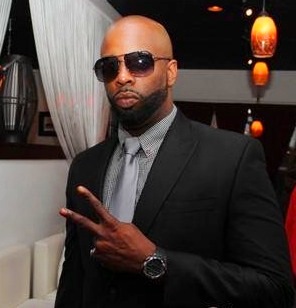
“I want to become a mentor to kids who are heading down the path that I went down,” said JR. “I want to let them know that it’s not worth it.”
Earlier in his life, JR was convicted of a felony and served time in jail. He was content to accept his jail sentence so he could have a clear slate and start over again once he was released. However, after completing his sentence in 2009, JR realized that starting over again wasn’t so easy for a young man with a record.
With the help of his church in Charleston, South Carolina, JR connected with Pastor Larry Bratton, who at the time was in charge of a nonprofit called BDB (Breaking Down Barriers). BDB, which helps community members overcome barriers to employment or services, helped JR find his first stable job after his release. However, Larry Bratton left BDB to become the Social Justice Advocate for The Sustainability Institute; a Charleston-based nonprofit that offers weatherization services to local residents and trains young people to become home performance professionals. JR eventually joined The Sustainability Institute’s Energy Conservation Corps as an AmeriCorps member.
JR spent six months in the Energy Conservation Corps, gaining hands-on experience in home weatherization techniques. He was a standout Corpsmember from the beginning, offering guidance and friendship to younger Corpsmembers. His success led to a job offer from Carolina Green Energy Systems, an energy retrofit company in Charleston. JR enjoyed his job with Carolina Green, but he was interested in starting his own weatherization business. He ended up leaving the company to avoid a conflict of interest.
As JR works with his partners to get IMSEI weatherization company up and running, he continues to work for the Sustainability Institute. He is currently a Crew Leader, but he will soon be hired as a fulltime Supervisor. On top of administrative duties, his main responsibility is to manage and organize crews. He trains Corpsmembers in weatherization techniques and helps run harassment training, OSHA safety training, and a financial literacy class.
On top of building his business and working at the Sustainability Institute, JR is also trying to reestablish Breaking Down Barriers, the organization that helped him find employment when he got out of jail.
“Our focus is not just youth, it’s for anyone who has any type of barrier. Like if you need help with painting your home but you’re not financially able to, that’s a barrier. If you’re a single mom and you need help finding a home, that’s a barrier. If you’re an ex-convict, that alone is a barrier,” said JR. “We want to provide training to whoever needs it, but we also to want to provide services. For instance, I might be hot off the street and I need a job. We’ll teach you how to paint. Then we have someone who needs their house painted but doesn’t have money to paint it. We can kill two birds with one stone.”
In addition to JR’s work schedule and his involvement with Breaking Down Barriers, he volunteers with the NAACP, ushers at his church, and helps out at a recreational park near the Sustainability Institute. He also serves with Philan Tree, a fellow 2012 Corpsmember of the Year, as a member of the National Council of Young Leaders. The Council, formed in July 2012 in response to a recommendation from the White House Council on Community Solutions, is comprised of low-income young adults from across the country. JR helps represent the voice of young people who have been involved in the justice system.
“My whole thing with the justice system is that it’s pretty hard to find second chances, even when what you did was so long ago,” he said. “Why should something I did six years ago – knowing that I’m not the same man I used to be, knowing that a lot of things have changed over these years – why should that hold me back from finding a job that I’m totally qualified for?”
Through the National Council of Young Leaders, JR has met with such public figures as Arne Duncan, Secretary of Education, and Ronnie Cho, the White House Liaison to Young Americans. JR is very grateful for his experience with the Sustainability Institute and AmeriCorps. Without these organizations he feels he would have never had so many opportunities and he would not be as successful as he is today.
“I’ve had all types of people calling who want to do an interview with me…from Charleston, from the Aspen Institute in New York, from people in DC – this is all because of AmeriCorps. I understand I had to put in hard work, but with the opportunities that AmeriCorps gave me it was easy for me to just fly with it,” said JR. “All of it has been a blessing to me. The way the Sustainability Institute gives me support and puts their trust in me, the way they fight for me is really amazing. Any type of help I need – like I needed an apartment. I was staying with my mom when I got out of jail in 2009 up until the fall of last year. They helped me find a place of my own. They meet all my needs. They’re not your average employers.”
It’s not just the people at The Sustainability Institute that JR appreciates; he is also grateful that his AmeriCorps experience exposed him to the weatherization business.
“I just love this work. The smile I put on a homeowners face when the electric bill comes and they’re saving a couple hundred dollars. Knowing that I had something to do with that is really powerful,” said JR.
To young people thinking about joining a Corps, JR says:
“I think the thing I would need to tell them is to make sacrifices. Starting off, you won’t even make as much money as you’d make at McDonald’s, but the experience, the training, the career development that you get in AmeriCorps will pay off in the long run…I would tell someone trying to join that it’s one hundred percent worth it. I would show them the change it makes. I would take them to the neighborhoods that I used to hang out in and show them the people I used to hang around with and I’d even take them to jail and show them where they’re headed if they continue with the life they’re living now. Then I’d show how I’ve been able to improve. I’d show them all the awards, all the committees I’m on. With just a little time – not even two years – I’ve gotten my own place, I’ve been nominated to be on councils, I was a 2012 Corpsmember of the Year, I travel a lot and I don’t even have to pay a dime for it. I just think that AmeriCorps is a very good thing that made a huge difference in my life, and I think it could do the same thing for them, too.”
An AmeriCorps member reflects on Hurricane Sandy recovery efforts
Taken from Conservation Corps Minnesota & Iowa
A few years ago, Tara Sloane couldn’t imagine picking up a chainsaw. Yet this fall she spent seven weeks mucking and gutting houses and managing volunteers as a member of the Conservation Corps’ Hurricane Sandy relief efforts. It was one of the most extraordinary experiences of her life.

A 2012 Three Rivers field crew member, Tara stepped into leadership roles she never imagined with behind-the-scenes deployment preparations, financial management and leading cleanup crews ― even though she felt like a novice during her year in the Corps.
“Coming out here, I didn’t even know how a house was constructed or even really where the wires were,” Tara said. “But after a week out here, I was leading crews, making sure all the crewmembers were safe, managing the emotions of the devastated homeowners and keeping their trust to know that I would not ruin their home.”
Tara originally heard about the Corps from a couch surfer friend. “It sounded like an incredible program but definitely not one for me… Chainsaws really weren’t something I could see myself getting into,” Tara said.
After traveling in Eastern Europe where she worked on organic farms, Tara discovered she liked working outside, getting her hands dirty and being exhausted at the end of a work day. So she applied for a Conservation Corps field crew position.
Early in her Corps term, Tara didn’t have much confidence or see herself as a leader. “I didn’t even know the difference between an elm and an oak,” she said. When she was given the opportunity to join the Hurricane Sandy relief response, Tara didn’t know what to expect. Corps members were told they would working mainly in shelters, but were soon running Team Rubicon’s cleanup operation and training and managing other AmeriCorps volunteers in the Rockaway neighborhood. Men and veterans who had experience working on houses came back again and again to volunteer on her crew.
The work touched Tara’s life. Her crew worked on the family homes of Vilmarie and Jose, which had sustained incredible damages. While corps members gutted the houses, Tara helped Vilmarie wash, hang and dry an entire garbage bag of family photos. Tara got to know the family through the pictures and stories Vilmarie told her in Spanish. “I felt so connected to them because I was literally hanging photos of her entire life, from holidays to weddings to vacations,” Tara said.
When the gutting work was done and all the pictures were saved, Jose and Vilmarie cried, hugged and said they always had a home there in the Rockaways.
During her second deployment, Tara was reunited with Jose and Vilmarie while canvassing for FEMA. They welcomed her with open arms, showed her their nearly completed house and reminded her she was always welcome in their home.
Tara knows her success in the relief effort came from the basic skills she learned during her time in Conservation Corps. As a crew member she was familiar with working long hours, knowing how to be safe with tools and working with different types of people.
“I loved AmeriCorps… I saw so much growth in myself,” Tara said. “This opportunity gave me a lot of resume builders and I am excited to see how this will translate into my other experiences.”
Representing Native American Youth: How Philan Tree works to improve opportunities for young people in her community
Where are they now? – Catching up with 2012 Corpsmember of the Year,
Philandrian Tree
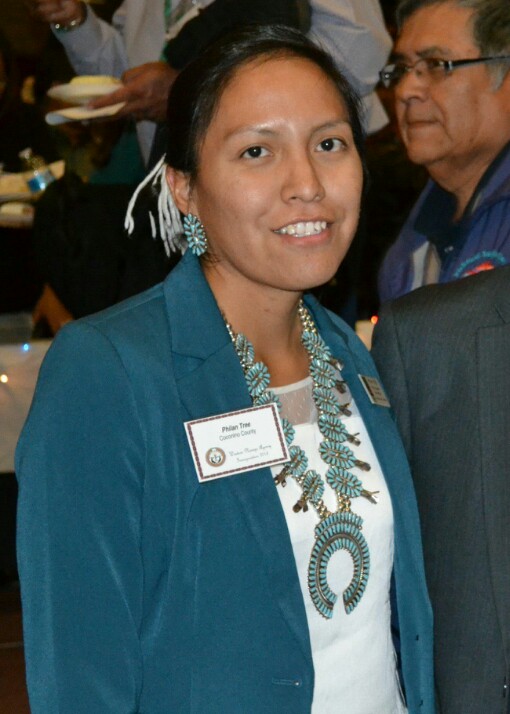
Philandrian Tree, a former member of the Coconino Rural Environment Corps, won Corpsmember of the Year in 2012 for her commitment to service. Read below to find out what she’s been up to since accepting her award, or find out more about Philan and her Corps experience by reading her bio from our 2012 National Conference.
Philan Tree’s association with The Corps Network did not end after she received her Corpsmember of the Year award at our National Conference last February. Along with Ladine Daniels, a fellow 2012 Corpsmember of the Year, Philan was nominated by The Corps Network to be one of the 14 founding members of the National Council of Young Leaders. The Council, formed in July 2012 in response to a recommendation from the White House Council on Community Solutions, is comprised of low-income young adults from across the country. The council members have diverse backgrounds, but they are united by how they have all had transformative experiences with youth programs like Year Up, Public Allies, Youth Leadership Institute, and YouthBuild, USA. The Corps Network is proud to have Philan and Ladine as our representatives on the council.
“So far it’s been a really good experience,” said Philan. “Just working with the different council members…I’ve been able to learn a lot about what other programs are out there. I’ve been learning about the different issues the council members face because they’re from different parts of the country. Then, from there, we came together to make recommendations to bring to elected officials and appointed officials in the government. It was interesting to work together to make those recommendations. Overall it’s been a really good learning experience.”
The Council’s purpose is to inform policymakers about the challenges faced by low-income youth and to offer suggestions for what can be done to ensure all young Americans have access to opportunities. As a member of the Council, Philan has had the chance to visit the White House and meet with a number of top officials. “We met with Secretary of Education Arne Duncan, the CEO of the Corporation for National and Community Service, we met the president of the Ludacris Foundation…It’s also been great to work regularly with Dorothy Stoneman, the president and founder of YouthBuild USA,” said Philan. “We’ve had a lot of access to good people that can give you a lot of insight into how programs operate. I feel like I’ve learned a lot… A lot of the meetings that we’ve had with the Departments, they’ve really been very welcoming and very receptive to our ideas and recommendations.”
The council members were chosen for their diverse backgrounds. Some of them have experienced homelessness. Some of them have struggled through drug addictions. Some have spent time in prison. Each council member brings their personal experiences to the table. Philan acts as the voice of rural and Native American youth.
Before joining the National Council of Young Leaders, Philan already had experience working on behalf of Native American peoples. When she was in college at Northern Arizona University, she and a colleague drafted a grant proposal for a home weatherization program that could help residents of Coconino County’s Native American reservations. Someone from the University’s AmeriCorps office was so impressed by the proposal that she referred Philan and her colleague to the City of Flagstaff Budget Manager as well as the Senior Program Manager at Coconino Rural Environment Corps (CREC). The Corps quickly offered AmeriCorps mentorship positions to Philan and her partner so they could access the resources they needed to make their plan a reality.
As a Corpsmember, Philan was instrumental in securing Memorandums of Understanding between Coconino County and two chapters of the Navajo Nation; the Leupp Chapter and the Tonalea Chapter. Because of these MOUs, CREC was able to employ 17 Navajo Nation AmeriCorps members to work directly with their chapters to install energy efficiency measures in homes in underserved Native American communities. Philan also procured a Resolution of Support from the Western Agency of the Navajo Nation allowing for CREC’s Energy Conservation Corps (ECC) to provide home weatherization to many families on the Navajo Nation lands of Coconino County.
As a result of Philan’s leadership, over 200 homes received much needed repairs and upgrades. Philan used her Navajo language skills to help inform elderly reservation residents about services they otherwise might not have known about. She led CREC’s first fully Navajo crews in translating informational materials and developing phrases to help explain weatherization techniques. Philan personally helped many residents fill out their applications for the weatherization program.
“I just really appreciated all of the support that everyone gave me back home. A lot of the chapters supported me, a lot of the people in the community really supported me. If it wasn’t for all that support, a lot of what we did wouldn’t have happened,” said Philan. “It was important to show them [reservation residents] that they can have a say in how programs are delivered. They would give suggestions and they would give feedback on how we should go about delivering these services and their ideas were well received. Often they were right and we would implement what they said. They had more of a direct say in how they wanted the services to work for them.”
After leaving the Corps, Philan took an internship with a local elected official on the Coconino County Board of Supervisors. She then moved to her current position providing communications and government relations support for the Navajo and Hopi tribes in her district.
“I work with the local governments on the reservations as well as their communities. I’m the point of contact for them when they have questions. I’m working on both sides to see when the county can provide a service or provide assistance, and then figuring out when we have to refer tribes out to another agency or program,” said Philan. “There’s just a lot of government-to-government relationship building between the county offices and the local leaders…A lot of my work is just finding the best ways to get services out to the residents on the reservations.”
Philan hopes to continue in this line of work. She wants to see more services reach Native American communities. She wants to see more support for Native American students. When she’s not at work or involved with the National Council of Young Leaders, Philan makes time to chair a grant advisory committee that works on behalf of Native students in the local school district.
Philan feels that her experience as a Corpsmember with CREC helped prepare her for what she’s doing now and what she wants to do in the future.
“Now I have experience with what programs work and why they work. When I look at other projects and opportunities coming in, I know what questions to ask. I got some good supervisory experience,” said Philan.
To other young people thinking about joining a Corps, Philan says:
“Just look around at the different types of Corps because they’re not all the same. And think about where you want to be. The overall experience can be really fun if you take advantage of it and utilize all the opportunities.”


